Swimming, and water resistance in general is often described as “low-impact.” There is a belief that swimming is very safe, and it is even the recommended exercise for rehabilitating injured individuals. Ironic, then, that swimming is also the cause of many head injuries that result in concussions.
While swimming is still generally safe, it’s not as safe as you might think. Even if the risk of drowning is largely mitigated by the presence of watchful lifeguards, they can’t protect you from head injuries caused by diving from a great height, slipping by the poolside, colliding with other swimmers, or accidentally swimming into the wall while swimming backstroke; these are on you.
If any one of those things mentioned above happened to you, you could easily suffer a concussion that requires medical attention. Do not keep on swimming as if it’s no big deal; concussions occur when an impact to your head is so severe it literally rattles your brain, and running head first into a wall can surely do that.
In this article, we will discuss the various ways you can get a concussion while swimming and tips you can implement to reduce your chances of suffering a severe head injury in the water.
Common causes of concussion while swimming
Slipping or falling on wet ground
Many pool accidents occur out of the water. Since the floors around the pool are slick with water from people exiting the pool or splashing water out, slip and fall accidents that result in a head injury are unfortunately common.
When was the last time you ever saw somebody wear a helmet while swimming? Also, how often do you see kids running because they want to dive bomb into the pool? It’s all fun and games until someone slips and hits their head on the floor.
When a lifeguard shouts at people to stop running by the poolside, they are literally trying to save lives; it’s that serious. You’d be lucky if you only suffered a mild concussion, because for some unlucky people, they don’t recover fully, if at all.
Diving
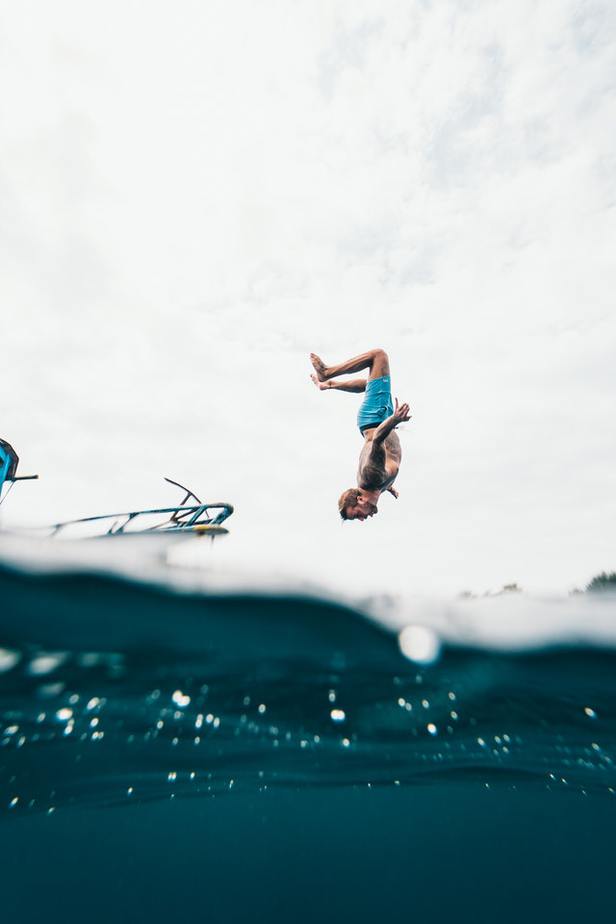
Doing flips and dive bombing into the water whenever the lifeguard wasn’t looking was one of the highlights of going to the swimming pool when I was growing up. It was also incredibly risky, and though I’ve botched a few attempts, I never suffered any serious injuries. Every day I count my blessings because what I did was incredibly stupid.
There’s a reason why there’s a “No Diving” sign posted by the pool. Aside from any injuries you might sustain getting ready for the dive (e.g. running or climbing somewhere high), the impact of your body against the water is enough to cause a concussion.
You’ll notice that when divers hit the water, they do so with their hands first to soften the impact. If you were to hit the water head first, particularly if it’s the back of your head (i.e. from a badly timed flip), it can cause you to lose consciousness and drown. But more than that, your brain can get badly concussed, leading to brain damage.
There’s also the risk of diving directly onto somebody. I’ve had a few close calls as a kid where I’d just jump into the pool without looking, and this is basically the same story for most young adrenaline junkies.
In a similar vein, sometimes the pool is shallower than expected. Or if you are diving outdoors, you must first check that there is enough depth for the height you plan on diving from. Perhaps you might even want to reconsider diving if there is even a slight risk that your head is going to hit a rock or something.
The solution to this problem is not necessarily “don’t dive”, but rather learn the proper techniques to dive and dive where appropriate. If the sign says “No Diving”, then don’t be a rebel and dive anyways.
Colliding with another swimmer
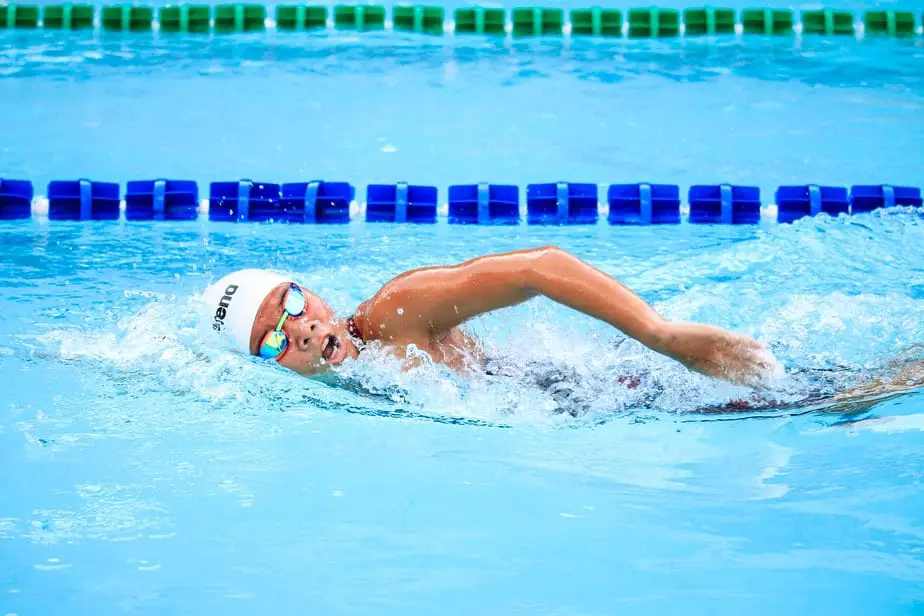
Collisions with other swimmers are unfortunately more common than you might think. This happens most often to people who don’t know proper pool etiquette.
Question: Would you be willing to get into a car and drive if there were no standardized rules of the road? Without a guideline that everyone follows, you wouldn’t know if the person in front of you would suddenly brake, swerve, or reverse, and the chances of a collision drastically increases.
Well, it’s kind of the same thing with swimming and pool etiquette. Like driving, swimming pools are divided into lanes. And while there aren’t any laws regarding how you should swim, there are definitely rules or etiquette that swimmers follow.
For example, if you’re in a lane that already has a swimmer in it, you should alert that swimmer that you’re about to enter. Furthermore, when two swimmers share a lane, each swimmer should pick a side and stick with it (the lane should be just wide enough to allow for this).
If there are three or more swimmers, you should “circle swim”, which means that everyone sticks to their right. When you reach the end, you turn around and swim down the lane on your new right. Swimmers should be moving in a counterclockwise circle, hence the name.
While circle swimming, if the person in front of you is slower than you, you can pass them in the left lane when there’s space, and you should not try to pass them near the end of the lane (this is an extremely common cause of collisions).
As you can see, if you know the rules of the road, you basically already know swimming etiquette, and this will keep you from colliding with another swimmer.
Colliding with the wall
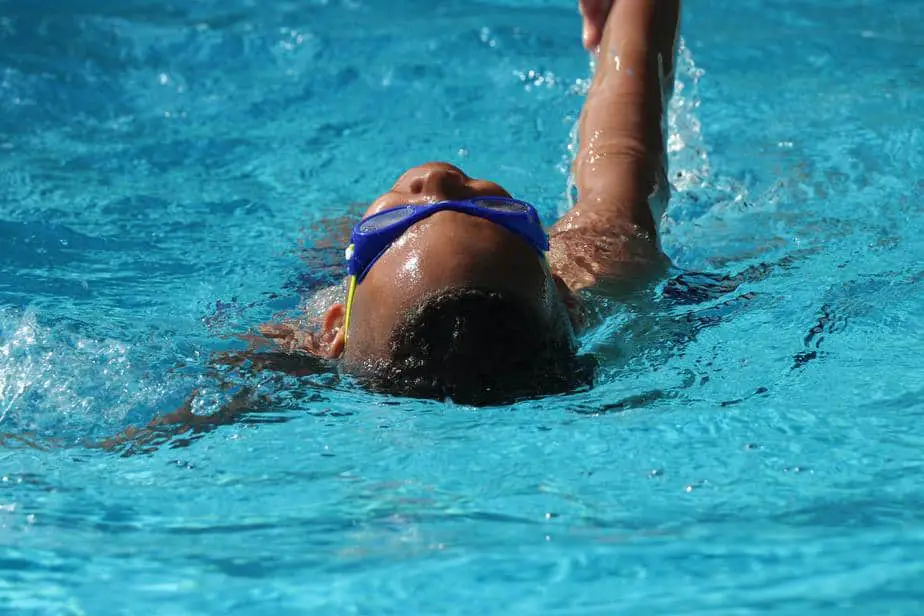
Swimmers doing backstrokes are the most likely type of swimmer to accidentally swim head first into a wall. Even at low speeds, this can be enough to cause a mild concussion.
The strategy most swimmers use to not bump into the wall is to use points of reference to judge how far along the pool they are. You might have noticed markings on the floor, and perhaps there might be markings on the ceiling if you’re in an indoor pool.
You can also try swimming in a lane right by the edge of the pool and use the pool ladders as a point of reference.
If your pool has set up backstroke flags, then pay close attention to them. What, did you think they were celebrating someone’s birthday or something? It’s actually to help people swimming backstroke judge how much distance is left to the end of the pool. They are often located 15 feet (5 meters) from the end so you have time to switch directions.
Next, if your neck is flexible enough, you can literally just tilt your head backwards so that you can see how much length is left. It can be disorienting because it will be upside down, and if you’re not careful you could strain your neck.
Lastly, you could always just keep one arm extended out the entire time and just keep flutter kicking. Once your extended arm touches the wall, well, you know that’s where the wall is. Simple, effective, and concussion free.
Can I swim with a concussion?
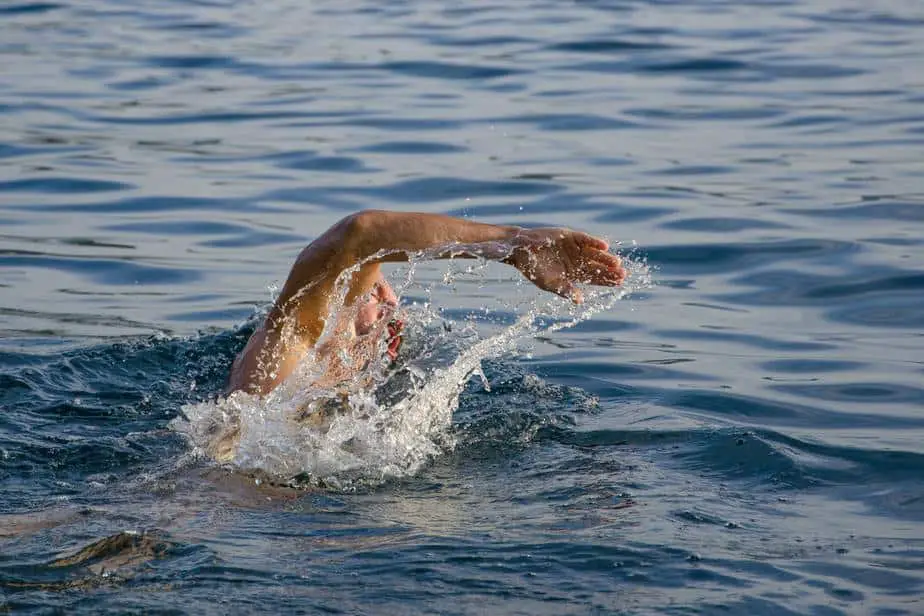
Generally the answer is no, but don’t take it from me; you will have to ask your physician for their medical opinion. If your concussion was sustained while swimming laps or diving, then there’s a chance that you can risk injuring your head once again, especially if you are not at your best.
That said, gentle swimming in shallow water can be a great activity to help you recover. Obviously don’t swim laps or dive, but just moving around in the water and overcoming the water resistance is a great, low-impact way to keep exercising.
With that said, be very careful if the swimming pool is crowded. Even if you are doing everything you can to stay safe, unfortunately you cannot predict how others will react. It’s possible that, through no fault of your own, another swimmer can still collide with you or accidentally hit you in the head with a float board or tube or something like that.
It’s highly recommended that you wear a life jacket during your recovery process, if you wish to be in deeper water, in case you start to feel unwell. Due to your weakened state, perhaps even treading water may prove hard to do. A life jacket will ensure that you’ll remain afloat easily so that a lifeguard can eventually assist you.
After learning about all the risks and precautions you will have to take, you might decide that it’s simply not worth the risk and refrain from swimming until your concussion has fully healed, and that would be very wise as well.
Will swimming make a concussion worse?

If you’ve read this far, then you should already know about the various ways you can get a head injury while at a swimming pool. If you were to injure your head again while you already have a concussion, you’re just making a bad situation worse.
Since you’re concussed, you are not at your best and you are at an increased risk to injure your head again. Plus, swimming can potentially worsen the symptoms of a concussion because of all the head movements involved.
You can potentially keep head movements to a minimum if you swim laps wearing a full face mask, however don’t take this as a recommendation to swim with a concussion.
The fact that you can even wonder if you are allowed to swim probably means you don’t have a concussion, otherwise you’d feel some nasty symptoms that would probably dissuade you from swimming. If you know you have a concussion, that means you were diagnosed by a doctor, so what was their medical opinion? I doubt they gave you the OK to keep swimming.
When you experience any of the symptoms of a concussion – headaches, nausea, sluggishness, confusion, or just a general feeling of unwellness – it’s your body communicating that you should stop and take a break.
Taking time off to heal will aid in the recovery process so that you can go back to swimming faster. If you force a premature return to the water while you’re still concussed, you can worsen your symptoms or even receive another head injury. It’s not a good idea to swim with a concussion.
Is it safe to hold my breath underwater with a concussion?
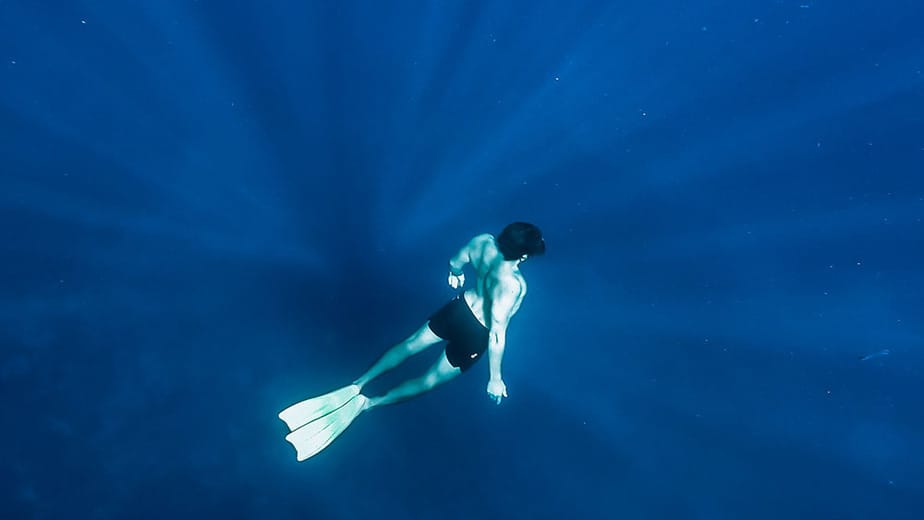
No, it is not. Depriving your brain of oxygen is the last thing you want to do when recovering from a concussion. Unfortunately, kids are the group of people most likely to ignore warnings and do risky activities like holding their breath underwater, often at the urging of or in competition with their friends.
As freedivers are commonly aware of, many untrained divers make the mistake of hyperventilating, or rapidly inhaling air beyond their normal capacity so that they can get as much air into their body as possible.
Unfortunately, any beneficial effects this might have is negated by the very serious side effect of deceiving your brain into thinking you can stay underwater for longer than you actually can. What’s happening when one hyperventilates is that the carbon dioxide levels in their body drops, and CO2 levels are what the brain uses as a reference point for when it needs to breathe.
By hyperventilating, you are forcibly causing CO2 levels in your body to drop to low levels which suppresses your urge to breathe, but just because you don’t feel the urge to breathe doesn’t mean your body doesn’t need fresh oxygen; it still does!
The end result is that divers who hyperventilate overestimate how much time left they can remain underwater (the urge to breath is not triggering), and they then lose consciousness and drown.
It doesn’t help that one of the side effects of a concussion is difficulty breathing, so why would you want to risk depriving yourself of even more oxygen? If you or your child are recovering from a concussion, it’s best to hold off from any activity that requires you to hold your breath for long periods of time.
Parting words
Despite being touted as “low-impact”, there are actually many ways you can suffer a head injury while swimming or diving. From swimming into a wall, colliding with another swimmer, or botching the landing of a dive (or diving into a shallow pool), you can easily suffer a concussion.
Furthermore, even if you are very cautious and know the rules of the pool, that doesn’t necessarily mean that others do. You could still fall victim to a collision if another swimmer is uninformed about the pool etiquette. You could misjudge the length of the pool left and swim into the wall while doing a backstroke.
Unfortunately, many swimming pool accidents happen to people who were being cautious. That may seem disheartening, but had they been even less cautious, then they might have gotten an even worse injury. Therefore, we are not telling you to throw caution into the wind, but that you always be wary of other swimmers.
In the same way that drivers practice “defensive driving”, you too should practice “defensive swimming.” Assume that any other swimmers in the same lane as you are always trying to overtake you, even if you’re close to the end of the lane, and react accordingly. You’ll find that your close calls will drop drastically.
Also, don’t do any fancy flips when diving, and don’t jump into any pool of water without first ensuring that it’s deep enough (and free of other swimmers) before you dive in.
Lastly, if you are recovering from a concussion, you should probably not swim at all until your symptoms are completely gone (or your doctor gives you the OK). Even then, you should ease your way back into the pool; don’t immediately resume the training regimen you were doing before your concussion.

